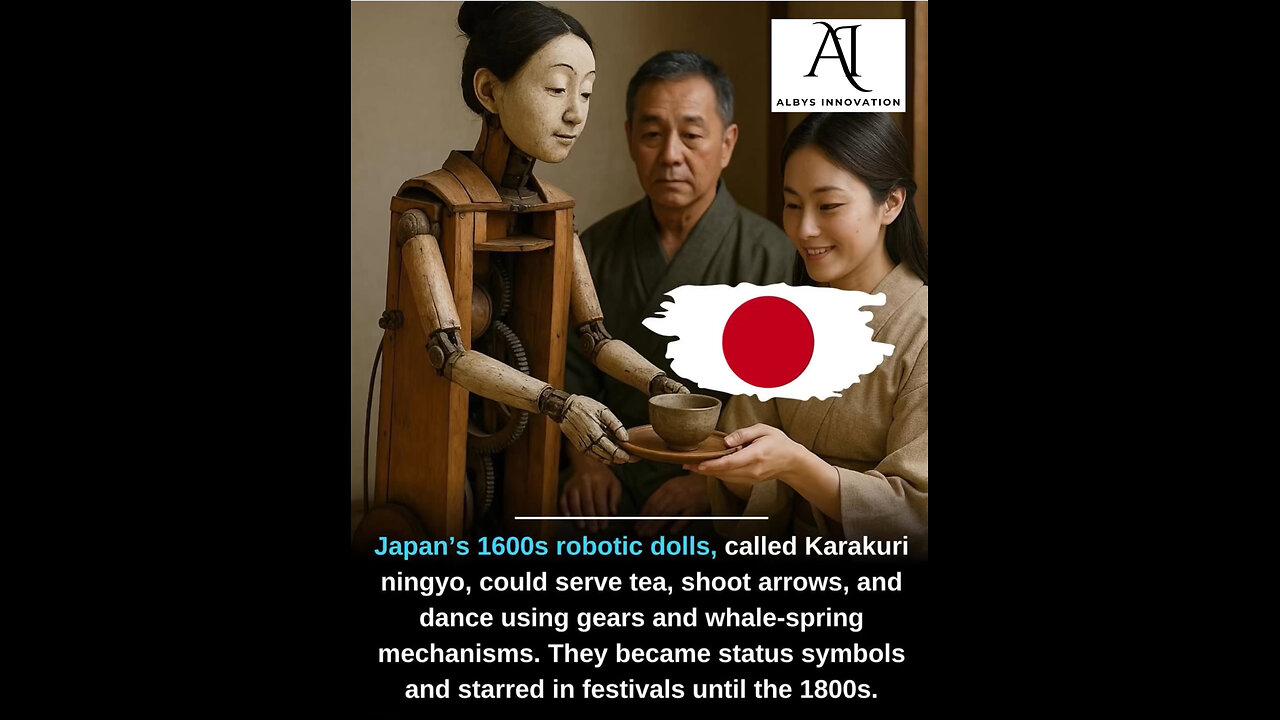Premium Only Content

Japan Built Robots in the 1600s?! Ancient Karakuri Dolls Will Blow Your Mind!
Did you know that Japan had mechanical robots in the 1600s? Long before artificial intelligence or electricity, Japanese inventors created Karakuri dolls—incredible automata that could serve tea, shoot arrows, and even write calligraphy!
These ancient robots, popular during the Edo period (17th–19th century), were powered entirely by springs, gears, and wooden cams, inspired by early European clockwork brought to Japan by Portuguese traders. Karakuri means “mechanism” or “trick,” because these devices were designed to mystify and delight, hiding their inner workings from the audience.
There were three types:
• Zashiki Karakuri for homes (like the tea-serving robot)
• Butai Karakuri for theater performances
• Dashi Karakuri for festival floats
Legendary artisans like Takeda Omi and Tanaka Hisashige engineered lifelike dolls, like an arrow-shooting boy and a calligraphy-writing figure—setting the foundation for Japan’s love of robotics and anime.
These ancient marvels represent centuries-old Japanese innovation, blending art, performance, and mechanical genius in one unforgettable cultural legacy.
If you think robots are new, think again. Japan was building them 400 years ago.
Watch now to discover how Karakuri puppets still influence tech, entertainment, and robotics today.
#Karakuri #JapaneseRobots #AncientTech #EdoPeriod #TeaRobot #MechanicalWonders #HistoryOfRobotics #TanakaHisashige #HiddenMechanisms #JapaneseCulture #OldJapan #RobotHistory #TechFromThePast #SteampunkOrigins #Innovation #TraditionalTech #RoboticsPioneer #AncientRobots #JapanFacts #MechanicalDolls #MindBlowingHistory
-
 LIVE
LIVE
Crypto Power Hour
57 minutes agoSelf-Custody vs Centralized Crypto Card
357 watching -
 LIVE
LIVE
LFA TV
10 hours agoBREAKING NEWS ON LFA TV! | FRIDAY 9/19/25
4,771 watching -
 45:45
45:45
JULIE GREEN MINISTRIES
2 hours agoWHAT WILL HAPPEN ON SEPTEMBER 23RD PT.1
66.5K232 -
 LIVE
LIVE
The Chris Salcedo Show
11 hours agoGOP Shields Violent Left From Consequences For Their Actions
794 watching -
 LIVE
LIVE
Welcome to the Rebellion Podcast
12 hours agoDisney Star Tells People to Cancel Disney - WTTR Podcast Live 9/19
233 watching -
 LIVE
LIVE
Game On!
20 hours ago $0.96 earnedHappy FOOTBALL FRIDAY! Week 3 NFL Betting Preview!
760 watching -
 15:10
15:10
Michael Button
16 hours ago $2.35 earnedGroundbreaking Discovery at Giza Pyramids?
44.3K10 -
 18:11
18:11
Tactical Considerations
16 hours ago $2.66 earnedIs This the Best Truck Gun for 2025?
24.9K3 -
 8:37
8:37
The Art of Improvement
21 hours ago $0.71 earnedLife Lessons I’d Tell My Teenage Self
18.6K4 -
 2:01:01
2:01:01
BEK TV
1 day agoTrent Loos in the Morning - 9/19/2025
12.3K1